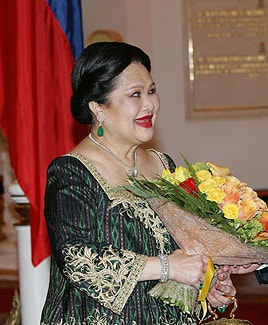|
August 12 is the birthday anniversary of Her Majesty Queen Sirikit of Thailand. The day is celebrated as national Mothers Day, with the Queen representing mothers, Mother of the country, and mother of current King and his three sisters. It is a public holiday.
It is appropriate on this auspicious occasion to honor mothers. In Thai culture mothers are given honor that approaches veneration. No matter a mother’s competence or lack of it at the task of nurturing her offspring, she is to be esteemed for the contributions and sacrifices she made. If she is loved and affectionate, kind and generous, supportive and patient, so much the better. If she is successful in enterprise, esteemed in public service, or renowned as a scholar, that is reserved for mention on other occasions. Mother’s Day is only about mothering. Except in the case of Her Majesty the Queen. Her mothering is at a higher level. The Mother of Thailand is given veneration that approaches worship. Although it is impossible to separate loyal narrative about the Queen from mundane details and complicated reality, it is also unnecessary to do so. This year in particular, as she is sustained in nursing care following her debilitating stroke, as her husband lies in state awaiting cremation two months from now, and as her son redefines kingship, it is all the more important to remember what she represents. At one time she was at the pinnacle of the Thai social pyramid, the elite of the elite. She represented the value of the traditional social structure. In that position she demonstrated what obligations the nobility had, as well as what privileges. She selected issues and projects to benefit the country. Her attention to preservation of the environment and textile cultural heritage were well known. She also stepped in to thwart attempts to promote the central culture and religion at the expense of minorities. Her birthday eve addresses in this regard are missed. But her role as intermediary between the sacred and the secular is more subtle and pervasive. Cultural anthropologists and mythologists might map this arcane territory inhabited by royalty at the point where super-social touches demi-divine. For the time being, however, I am content to observe that the national narrative actually does refer to this in metaphors and innuendos, being careful not to cement the pieces so tightly together that they ever imply that one line of narrative is an allegory for another. For her part, Queen Sirikit was a patron of royal arts including masked khon performances of the Ramakien and it was her hope to develop popular support for this form of classical dance-drama about divine kings and queens. That brings us to the matter of national identity and cultural validity, about which “the palace” is always concerned and is scrambling to enhance. Put very simply, as school books put it, Thai culture is upheld by three things: king, religion and nation-state. They are an ineffable trinity, each institution sustained by the other two. If any of them fail the others fall, and the nation as it is known ceases to exist. What then results is impossible to imagine. Moreover, each institution is intricately composed of P E O P L E, mortal human beings who have somehow agreed to cooperate in complex relationships about which they have not been consulted. This is generally acceptable as long as that is understood to be the best configuration presently available, and promotes everyone’s welfare, upholding a grateful population and their core values. The role of HM the Queen in this has been emblematic rather than entirely functional. She, like Sita in the Ramakien, is a key player whether she is active as in the past or passive as is apparently her present circumstance. As in the many acts of the Ramakien dance-drama, her role in this act is off-stage but the action is never comprehensible without her. Nor is the drama entirely predictable as it proceeds. It is a drama, after all, that is both cosmic and temporal. I find the Thai salute especially appropriate this year. The exaltation is not “Happy birthday” but “Prosper!” [“Long life the Queen” is not a translation of “Song phra charoen” but is an English equivalent.] “Song phra charoen,” ทรงพระเจริญ is utterly contextual. What it means for Her Majesty to prosper under these circumstances is beyond my grasp, but I sincerely wish it to include all things good and positive.
1 Comment
8/11/2017 11:29:14 pm
I have loved Her Majesty, Queen Sirikit, all my life, and I do consider her the Mother of Thailand.
Reply
Leave a Reply. |
AuthorRev. Dr. Kenneth Dobson posts his weekly reflections on this blog. Archives
March 2024
Categories |
| Ken Dobson's Queer Ruminations from Thailand |
|

 RSS Feed
RSS Feed
